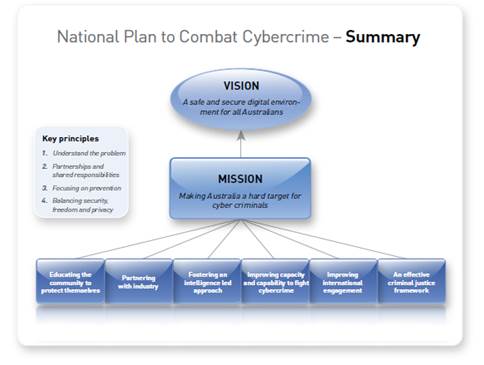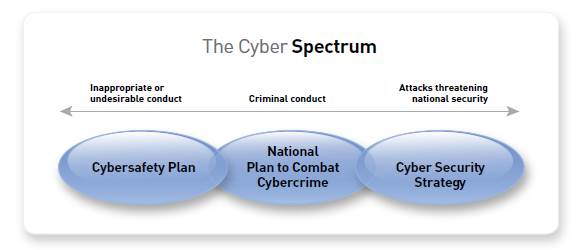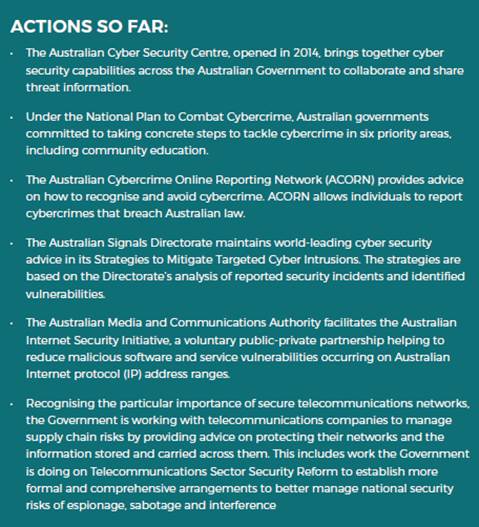Coordinating law enforcement across jurisdictions
2.1
Cybercrime is a global challenge, and any effective response requires
close coordination between law enforcement agencies across multiple international
jurisdictions. As the International Association of Prosecutors—Global Prosecutors
E-Crime Network (GPEN) stated, the central problem for law enforcement relates
to the problem of jurisdiction and the borderless nature of the internet:
Nearly every cybercrime will involve more than one jurisdiction
and therefore require some form of international cooperation. In cybercrime
cases you can have parallel or competing jurisdictions. There is the need for
clarity regarding jurisdiction some countries have domestic laws with
extrajurisdictional effect; and will limit the assistance they will give to
another country on a matter if they have a jurisdictional claim or interest. If
you look also at the different legal, investigative and prosecution systems and
the fact that some countries will not extradite their own nationals. It can
become very complicated and you can understand why countries require rules on
negotiating jurisdiction.[1]
2.2
This borderless nature of cybercrime means that no country can fully
protect itself against cybercrime without the help of law enforcement in other
countries. It is therefore necessary for all countries to have law enforcement
agencies, prosecutors and judges who understand the nature of cybercrime and
are able to cooperate on investigations and prosecutions of these crimes. As
GPEN noted:
ICT criminals typically hide in countries that are less
developed, where the law enforcement personnel, prosecutors and judges are less
efficient in the investigation and prosecution of ICT offences.[2]
International law enforcement arrangements
2.3
Australia is party to several inter-jurisdictional treaties, alliances
and other mechanisms that aim to facilitate international cooperation in
relation to the investigation of criminal activity enabled by new and emerging
technologies.
Council of Europe Convention on
Cybercrime (Budapest Convention)
2.4
Council of Europe Convention on Cybercrime (Budapest Convention) is the
leading, binding international instrument directed at cybercrime. It sets out
offences that criminalise ICT-offending, and encourages effective international
cooperation which is needed not only between governments but also with
industry. The Australian government announced in 2010 that it would take steps
to accede to the Budapest Convention. It came into force in Australia on 1
March 2013.[3]
2.5
Australia's accession to the Budapest Convention helps to improve the
ability of Australian law enforcement agencies to work effectively with their
overseas counterparts. The Budapest Convention aims to:
-
harmonise domestic legal frameworks on cybercrime;
-
provide for domestic powers to investigate and prosecute
cybercrime; and
-
establish an effective regime of international legal cooperation.[4]
2.6
Ms Esther George, Lead Cybercrime Consultant, International Association
of Prosecutors, noted how many non-European countries, including Australia,
have now adopted the Budapest Convention, increasing its effectiveness in
establishing principles for cybercrime offences:
...the Council of Europe cybercrime convention, which, although
it began in Europe, has actually spread and taken over quite a few countries.
They have about 56 countries as signatories now, and that includes Australia,
US, Turkey, Chile, Costa Rica, Dominican Republic, Israel, Japan, Mauritius, Senegal,
Sierra Leone, Tonga and the Philippines. I understand that Tunisia has recently
been invited to join....The reason that I think this convention is very good is
not just because I'm a Council of Europe expert...but also because the Council of
Europe convention is the only treaty you have that actually deals with [it].
It's been around since 2001 and it covers what I think are the main pillars
that need to be covered. It sets out the offences, and you've got countries
that have not signed up to the convention that actually have taken on board the
principles in their legislation and they've actually criminalised the
offences.... It brings back the idea that what you need for international
cooperation is for every country to criminalise the same offences.[5]
Mutual Legal Assistance Treaties
2.7
Mutual Legal Assistance Treaties (MLATs) are agreements between
governments that facilitate the exchange of information relevant to an
investigation occurring in at least one of those countries. They impact on the
way that a user's data is shared with foreign governments for criminal
investigations and prosecutions. MLATs are designed to facilitate cooperation
in addressing serious cases of criminal activity including cybercrime. This
international standardised process allows a court or judge to review each
request before data is accessed.[6]
2.8
MLATs present a number of challenges to law enforcement agencies; some
of these challenges are discussed in subsequent chapters.
Five Eyes Alliance
2.9
The Five Eyes Alliance is an intelligence alliance involving the United
Kingdom, United States, Canada, Australia and New Zealand. It was formally
founded on 5 March 1946
as a multilateral post-war agreement for cooperation in signals
intelligence known as the UKUSA Agreement, and subsequently expanded to include
Canada (1948) and Australia and New Zealand (1956). After more than 70 years,
its scope continues to expand in response to security concerns associated with
the emergence of new technologies.[7]
Australian law enforcement policy framework
2.10
In Australia, there has been a concerted national effort to develop a
coordinated response to cybercrime, including the implementation of a high
level policy framework to guide government, including law enforcement,
contributions to a safer and more secure online environment.[8]
National Plan to Combat Cybercrime
2.11
In 2013 the Australian government released the first National Plan to
Combat Cybercrime.[9]
The National Plan provides a coordinated national response across
jurisdictions, based on six key principles (see Figure 2).
Figure 2: Overview of National Plan
to Combat Cybercrime

2.12
The Plan notes that cybercrimes are part of a 'cyber spectrum' of
activities ranging from broader social and personal risks associated with the
use of the internet and computers on the one hand, to attacks that threaten
national security on the other. The Plan focuses on the centre of this
spectrum: criminal conduct (see Figure 3).
Figure 3: The Cyber Spectrum[10]

Australia's Cyber Security Strategy
2.13
In 2016 the Prime Minister launched Australia's Cyber Security
Strategy as a 'roadmap for creating a "cyber smart nation"'. The
Strategy sets out the Australian government's philosophy and program for 'meeting
the dual challenges of the digital age—advancing and protecting our interests'
online between 2016 and 2020.[11]
2.14
It recognises that Australia needs to innovate and diversify its
economy, and embrace 'disruptive technologies' that open up new possibilities for
innovation and growth.[12]
2.15
The Strategy recognises that digital technologies bring risks, and that
strong cyber security is a 'fundamental element of our growth and prosperity in
a global economy' and vital to national security requiring partnerships between
governments, the private sector and the community:[13]
As people and systems become increasingly interconnected, the
quantity and value of information held online has increased. So have efforts to
steal and exploit that information. Cyberspace, and the dynamic opportunities
it offers, is under persistent threat.[14]
2.16
The objectives of the Strategy include:
-
the creation of jointly operated cyber threat sharing centres and
an online threat sharing portal;
-
partnering internationally to prevent cybercrime and other
malicious/nefarious cyber activity; and
-
helping to build capacity and awareness within Australia's public
and private sectors by developing a highly-skilled workforce and raising
citizens' awareness of the risks and benefits of the cyber realm.[15]
2.17
The Strategy includes a commitment to increasing the capabilities of the
Australian Cyber Security Centre (ACSC); a new multi-use facility for the
ACSC; additional funding for the Australian Federal Police (AFP) and Australian
Criminal Intelligence Commission (ACIC); and engaging our regional partners to
shut down 'safe havens' for cyber criminals.[16]
It also recognises the importance of government working with the business
sector to address cyber threats.[17]
The Strategy also outlines a number of cyber security initiatives that have
been implemented in relation to building strong cyber defences (see Figure 4).
2.18
Mr Andrew Colvin, Commissioner, AFP has remarked that the Strategy
requires constant monitoring in order to keep pace with the changing cyber
security environment:
The government is constantly reviewing that strategy, and
that's because, in cybercrime, of all the crimes we deal with, two years ago is
a very long time and things have changed enormously, both in the threat actors
that we are dealing with but also in the technologies—the targets that they're
attacking.[18]
Figure 4: Australian cyber security
initiatives as at 2016[19]

A new National Plan to Combat
Cybercrime
2.19
On 19 May 2017, the Council of Australian Governments Law, Crime and
Community Safety Council, comprising ministers with responsibilities for law
and justice, police and emergency management, agreed to develop a new National
Plan to Combat Cybercrime 'to ensure a strong national approach to tackling
the increasing risks to business and individuals posed by cybercrime'.[20]
2.20
The National Cybercrime Working Group, comprising representatives from
state and territory police and justice agencies, the ACIC and the Australia New
Zealand Policing Advisory Agency, is currently overseeing the development of the
new Plan.[21]
Australia's International Cyber
Engagement Strategy[22]
2.21
In October 2017, the Australian government released Australia's
International Cyber Engagement Strategy aimed at fostering relationships
between Australia and Asia-Pacific nations, such as China, New Zealand, South
Korea and India, and improving connectivity, collaboration, and access
throughout the region, especially in areas such as cyber security and internet
governance.[23]
2.22
The Strategy has led to the formation of the Asia Pacific Computer
Emergency Response Team (APCERT), a combination of CERTs from several nations
that monitor and protect cyberspace in the region. It is also anticipated that overall
regional cyber security capability will be strengthened as a result of the
establishment of the Pacific Cyber Security Operational Network (PaCSON) to
provide operational points of contact.[24]
Australian law enforcement agencies
2.23
Within Australia, responsibility for dealing with the different forms of
cybercrime is shared between national, state and territory law enforcement and
security agencies.[25]
Department of Home Affairs
2.24
The government established the portfolio of Home Affairs in December
2017. It includes the ACIC, AFP, Australian Signals Directorate (ASD), Australian
Transaction Reports and Analysis Centre (AUSTRAC), Australian Border Force
(ABF), and Australian Security Intelligence Organisation (ASIO), representing
an amalgamation of national security, emergency management and criminal justice
functions from across government.[26]
The portfolio also encompasses the Commonwealth Ombudsman which remains an
independent statutory authority.[27]
2.25
The Department of Home Affairs (DHA), Attorney-General's Department
(AGD) and Australian Border Force (ABF) stated that strong cyber security is
'fundamental to our economic growth and is vital for our national security'.
They noted that the Home Affairs portfolio established in December 2017 is
designed to be a central policy agency providing coordinated strategy and
policy leadership.
Strong oversight and accountability is important to give the
public confidence that our agencies not only safeguard our nation's security,
but do so respecting the rights and liberties of all Australians.[28]
Australian Commission for Law
Enforcement Integrity
2.26
The Australian Commission for Law Enforcement Integrity (ACLEI) is a
statutory authority established by the Law Enforcement Integrity
Commissioner Act 2006 (the LEIC Act).
2.27
ACLEI is the only Commonwealth agency dedicated to the prevention,
detection and investigation of corrupt conduct. It forms part of the
Australian government's anti-corruption framework, focusing on agencies
with law enforcement functions operating within a high-corruption risk
environment.[29]
Much of the information gathered by ACLEI occurs covertly—including through lawful
access to digital records, and by using electronic surveillance capabilities.
Often, ACLEI uses covertly-obtained material as a basis to collect additional
information using its other investigatory tools—such
as by issuing a summons for a person to attend a private hearing to give
evidence, or corroborating information in another way (including by issuing
notices to produce documents, or by conducting a search of premises under
warrant).[30]
2.28
ACLEI works closely with other agencies subject to the
Integrity Commissioner's jurisdiction to share information and insights to
identify vulnerabilities in the agencies' practices and procedures and help
strengthen anti-corruption policies and arrangements. It also publishes case
studies, investigation reports and articles on its website to assist corruption
prevention practitioners.[31]
Australian Criminal Intelligence
Commission
2.29
The ACIC is Australia's national criminal intelligence agency. It
commenced operations on 1 July 2016, bringing together the Australian Crime
Commission (ACC) and CrimTrac to form Australia's national criminal
intelligence agency equipped with intelligence, investigative and information
delivery functions.
2.30
The ACIC 'works with partners on the serious and organised crime threats
of most harm to Australians and the national interest'.[32]
One of the agency's key priorities is to explore the future of crime and
justice, including the emergence of new technologies and potential impacts.[33]
2.31
The ACIC is the system administrator responsible for the operation of the
Australian Cybercrime Online Reporting Network (ACORN). In 2018−19, the Australian
government allocated $59.1 million to the ACIC to develop the National Criminal
Intelligence System (NCIS) as a whole of government capability to share criminal
information and intelligence. The NCIS is discussed further in Chapter 6.
Australian Cyber Security Centre
2.32
The Australian Cyber Security Centre (ACSC), established by the
Australian government in November 2014, brings together law enforcement and
security agencies from across the nation and leads the Australian government's
efforts to improve cyber security.
2.33
ACSC is located within the ASD. Its role is to continuously monitor
cyber threats across the globe, and provide advice and information about how
Australians can protect themselves and their businesses online.
2.34
ACSC also works with government, business and academic partners and
experts in Australia and overseas to investigate and develop solutions to cyber
security threats through a national network of Joint Cyber Security Centres.[34]
2.35
The Computer Emergency Response Team (CERT), based in the ACSC, was launched
in 2010 to provide Australian businesses, Australia's critical infrastructure
and other systems of national interest (rather than individuals or small
businesses) with advice and support in mitigating cyber threats.[35]
Australian Federal Police
2.36
The AFP plays a pivotal role in enforcing federal criminal law and
protecting the Australian national interests from crime by operating in the
evolving digital and law enforcement landscape.
2.37
The AFP Corporate Plan 2017–18 lists a key focus of the AFP's capability
development in continuously building on the ability to strengthen information
on demand as well as detect, prevent and predict serious crime through deep
data exploration. Other key focuses identified in the Corporate Plan include
the ongoing partnerships with industry to invest in innovation to combat
serious and organised crime.[36]
Australian Signals Directorate
2.38
The single biggest concentration of national cyber expertise lies within
the ASD. The Cyber Security Research Centre (CSRC) noted that the central role
and expertise of the ASD will be critical in future in ensuring an effective cooperative
national effort on cybercrime.[37]
Australian Transaction Reports and
Analysis Centre
2.39
The Australian Transaction Reports and Analysis Centre (AUSTRAC) is
Australia's financial intelligence unit and anti-money laundering and
counter-terrorism financing regulator. Its purpose is to protect the integrity
of Australia's financial system and contribute to the administration of justice
through its expertise in countering money laundering and the financing of
terrorism:
AUSTRAC works closely with law enforcement and national
security intelligence agencies, primarily on counter-terrorism and
counter-terrorism financing matters, as well as other national security
priorities. AUSTRAC's intelligence has played an important role in identifying
new suspects linked to terrorism in Australia and overseas, and has improved
Australia's understanding of high-risk funds flows to Syria, Iraq and
surrounding countries.[38]
Other agencies
2.40
Other Australian government agencies with existing cybercrime and cyber
security responsibilities also include:
-
the Australian Digital Health Agency, which is responsible for
the Australian government's digital health program, and Digital Health Cyber
Security Centre;
-
the Australian Taxation Office and Department of Social Services,
which work to ensure a more secure cyber environment for Australians;
-
the Australian Secret Intelligence Service (ASIS), which is
responsible for counter-intelligence activities overseas; and
-
the Australian Security Intelligence Organisation (ASIO), which
is part of the Home Affairs portfolio and responsible for issues relating to
cyber espionage in Australia.[39]
2.41
The Office of the eSafety Commissioner was established in July 2015.[40]
The role of the office is to promote online safety for all Australians by
coordinating online safety efforts of government, industry and the
not-for-profit community. The office has 'a broad remit' including:
-
a complaints service for young
Australians who experience serious cyberbullying
-
identifying and removing illegal
online content
-
tackling image-based abuse.
The Office also provides audience-specific content to help
educate all Australians about online safety including young people, women,
teachers, parents, seniors and community groups.[41]
Navigation: Previous Page | Contents | Next Page